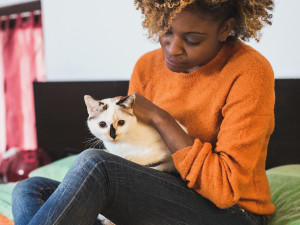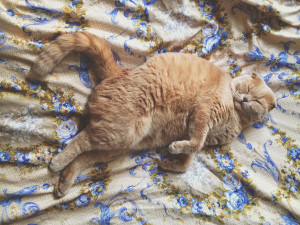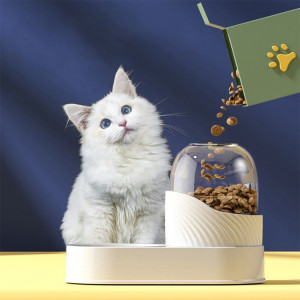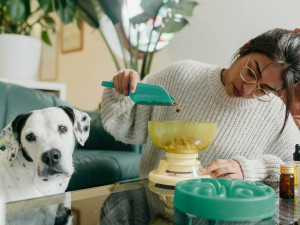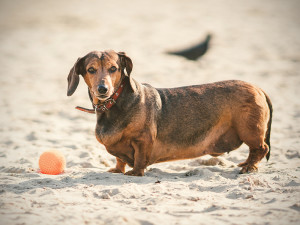How Tech Helps Cats Lose Weight
A study found that smart feeders and digital scales are successful tools in cat weight-loss programs.
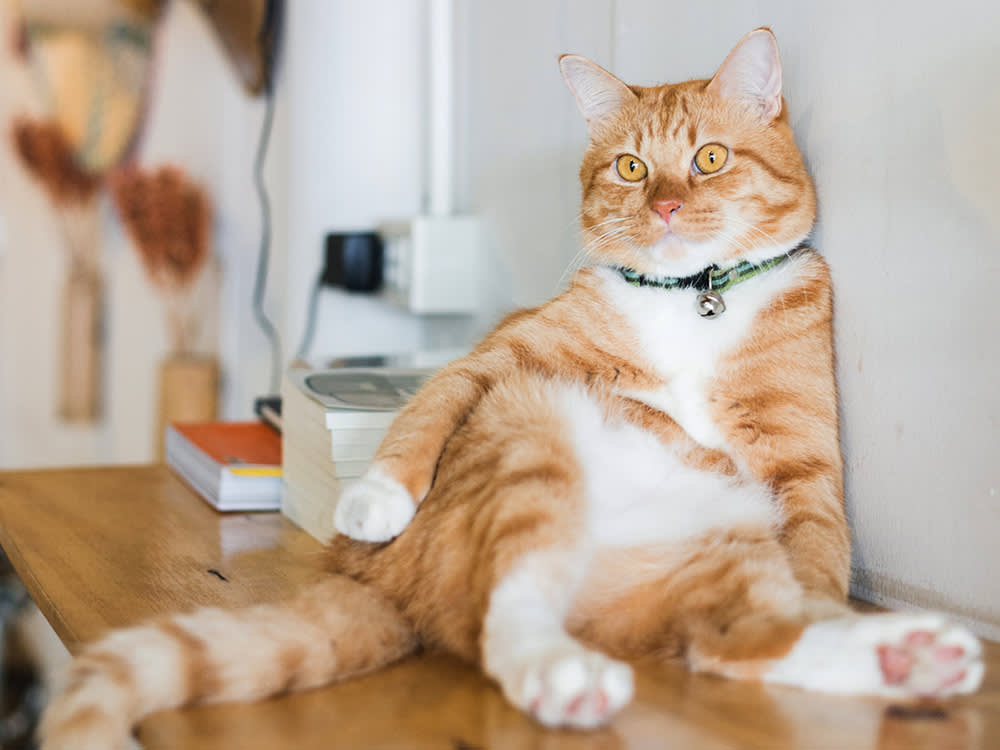
share article
When Spudge was surrendered to the Dane County Humane Society in Madison, Wisconsin, in 2021, he tipped the scales at a whopping 37 pounds — 280 percent of his ideal weight. The middle-aged black cat was so overweight that he struggled to walk. Dr. Ken Lambrecht, founder and medical director of West Towne Veterinary Clinic and CEO and co-founder of Healthy Pet Connectopens in a new tab, offered to foster Spudge and put him on a strict weight loss plan. “He was the most challenging case we’ve ever treated,” Dr. Lambrecht recalls.
Spudge is not alone. Almost 60 percent of cats are obeseopens in a new tab, increasing their risk for health problems ranging from arthritisopens in a new tab and pancreatitis to diabetesopens in a new tab and liver disease. Dr. Lambrecht teamed up with Dr. Barr Hadar, co-founder and chief data and research officer at Healthy Pet Connect, to determine if a combination of high tech tools, including a smart feederopens in a new tab and digital scale, could help obeseopens in a new tab cats living in multi-cat households lose more weight than conventional calorie restriction.
The researchopens in a new tab, published in the Journal of Feline Medicine and Surgery, divided cat owners into two groups: The first group put their cats on a calorie restricted prescription diet and used measuring cups to portion food; the second group followed the same calorie restricted prescription diet but owners used digital scales to measure cat food, and microchip-enabled smart feeders to dispense it; treat cameras monitored their behavior at the feeders and cats wore activity trackers to monitor their movements.
All cat owners worked with their veterinarians to monitor weight loss; they tracked food portions and weight in the Healthy Pet Connect app and the data was sent to their vets who made adjustments as needed. At the end of the 12-week period, 55 percent of the cats that were fed a prescription diet lost weight while 100 percent of the cats that ate a prescription diet and had access to tech-enabled tools lost weight — and lost four times more weight than the cats that had their food measured with a cup and ate from a conventional bowl.
Dr. Hadar attributes more successful weight loss among cats in the tech group to two factors: The digital scale allowed for more precise portion control; the microchip-enabled feeders also cut down on the number of cats stealing food from other cats in the household, although cats still tried to take more than their allotted portion of food. “Some cats will try to outsmart the smart feeders,” Dr. Hadar says. “There are webcam videos of cats getting automatic feeders to release more food and of dominant cats stealing food from a submissive cat’s microchip feeder by dragging them close enough to open their feeder and allow the dominant cat to eat the food.”
While the main goal of the research was to assess whether high-tech tools could help cats lose weight, Dr. Lambrecht and Dr. Hadar recorded other interesting findings, including changes in feeding patterns. In multi-cat households, dominant cats often scarf down as much food as possible from their own bowls before stealing food from other cats; it means that cats often eat larger, less frequent meals. Cats that received their meals in smart feeders started eating slower, more frequent meals. Adopting a “grazing” pattern wasn’t associated with weight loss but Dr. Lambrecht believes the behavior change is significant, adding, “We want the cat to eat six to eight times a day; we do not want them bolting their food.”
Moreover, the cats (and their owners) adapted well to using the technology at mealtimes. The Healthy Pet Connect app showed that the quality of life of all cats enrolled in the study increased. The study looked at multi-cat households but Dr. Hadar believes the same approach could work in homes with a single overweight cat.
Cost might be the biggest barrier to widespread adoption of smart feeders: The price for the tech ecosystem provided in the study topped $750. Dr. Hadar and Dr. Lambrecht asked the cat parents who participated how much they would be willing to spend on a similar setup. Their response: $149. “There are constantly new tools and devices and software being developed,” Dr. Hadar assures. “As new technology comes out, the prices will start to come down.”
Smart feeders and digital scales can be important tools for helping cats lose weight. It’s also important to work with your veterinarian to develop a weight-loss program. Dr. Lambrecht points to the significance of choosing the right food to preserve muscle and burn fat while monitoring organ health. The approach has worked for Spudge. The nine-year-old cat has lost 18 pounds over 11 months with the help of a prescription diet and high tech feeding tools. He’s got seven more pounds to go to reach his goal weight. “Obesity is a 100 percent preventable disease,” Dr. Lambrecht says. “As veterinarians just need better tools so we can advise and educate pet parents.”
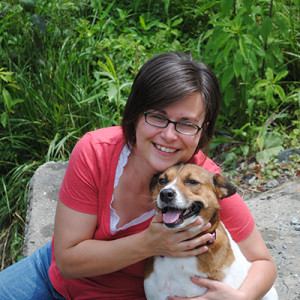
Jodi Helmer
Jodi Helmer is a North Carolina-based freelance writer who shares her home with an embarrassing number of rescue dogs and relies on four feral cats to patrol the barn. When she isn’t refilling food and water dishes, Jodi writes about animals for Scientific American, Sierra, WebMD, AKC Family Dog, Living the Country Life, and Out Here.
Related articles
![African American man with braids sitting on his bed using his computer with his dog next to him also looking at the computer]() opens in a new tab
opens in a new tabThere’s a High-Tech Training Solution For Your Dog’s Separation Anxiety
Like most things in 2023, there’s a Zoom link for this.
![white cat having dry food added to its feeder]() opens in a new tab
opens in a new tab7 Automatic Pet Feeders That Will Make Every Meal an Event
Go ahead, make your morning routine a little easier.
![Woman measuring dog food with scale]() opens in a new tab
opens in a new tabShould You Put Your Dog on a Low-Calorie Diet?
Diet culture is a tricky thing — for pets, too.
![Woman petting her cat]() opens in a new tab
opens in a new tabDon’t Come For Us, But Is Your Cat Overweight?
We love a chonky cat, but here’s what you should know.
![An obese dachshund dog plays with a rubber ball on a sandy beach]() opens in a new tab
opens in a new tabWhat to Know When Your Vet Says Your Dog Is Overweight
Don’t take it personally — even if that’s hard to do.
